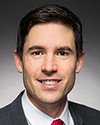Thank you, Mr. Chair.
This is one of the important points, particularly for Quebec and its first nations, because it concerns the whole issue of the St. Lawrence Seaway.
In this context, the St. Lawrence Seaway is obviously essential to navigation, but there may be elements that affect first nations, in a beneficial way in some cases, but especially in a more negative way in others.
We want first nations to be involved in the governance, management and decision making when it comes to the protection, maintenance and use of the St. Lawrence Seaway. This right to participation helps protect the water source of many nations along the St. Lawrence, such as the Innu, the Abenaki and the Mohawks, to name just a few.
This bill aims to protect water sources, and we really want to make sure that this is also the case for the St. Lawrence River.
For the benefit of the outsiders who are listening to us, I will read subclause 29.1(1), which we are proposing to add:
29.1 (1) The Minister — as well as any other members of the King's Privy Council for Canada, other persons and bodies established under an international agreement that are concerned — must ensure that First Nations directly connected to the St. Lawrence Seaway and its tributaries enjoy a full and meaningful right to participate in governance, management and decision making concerning the protection, maintenance and use of the St. Lawrence Seaway.
After that, there would be subclause 29.1(2), which would read as follows:
(2) The right to participate includes the prior and informed consultation of First Nations and their free, prior and informed consent in respect of any initiative that directly affects their territories, resources or Aboriginal rights.
Thank you.





